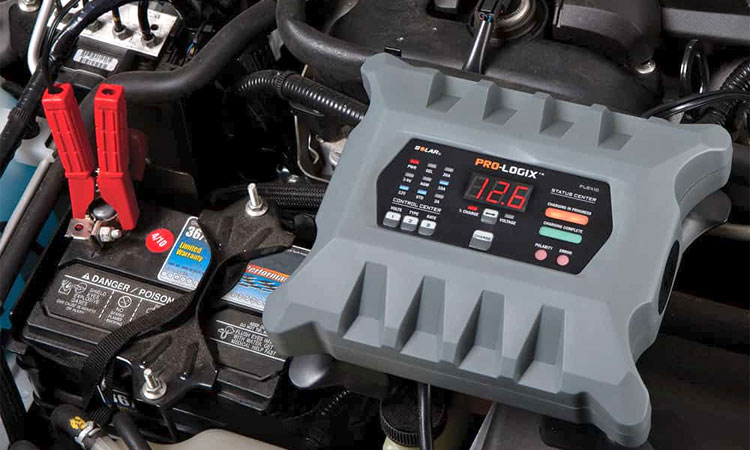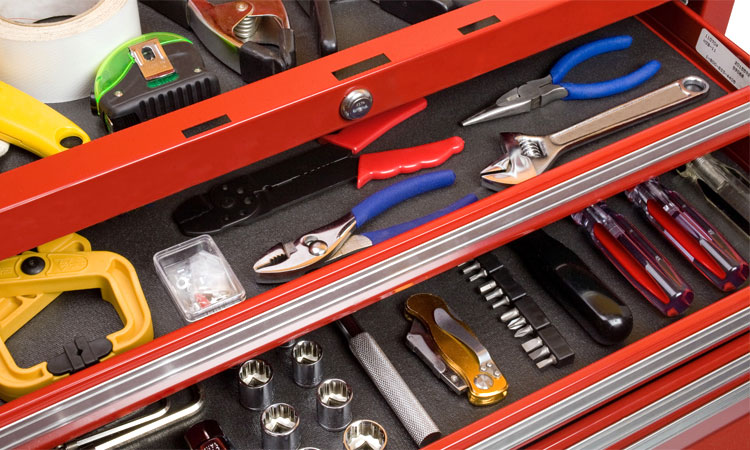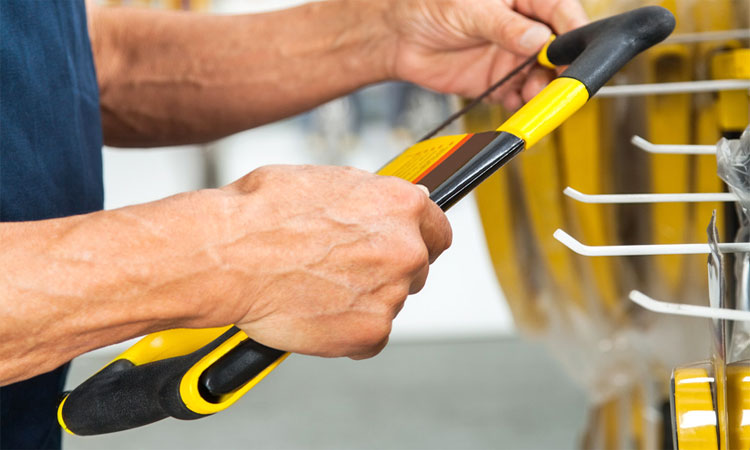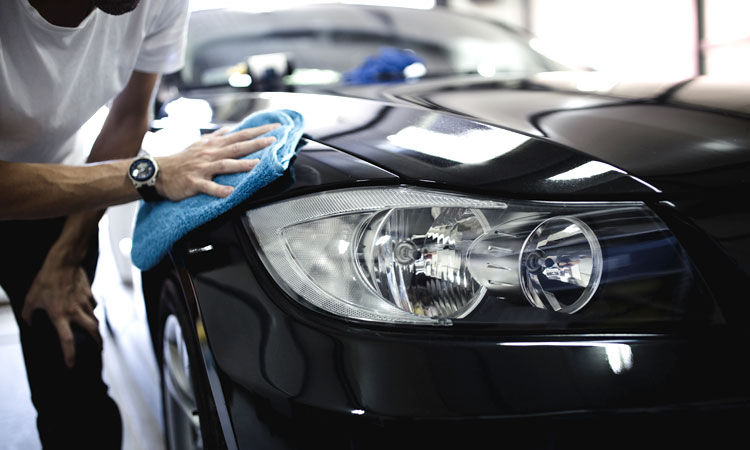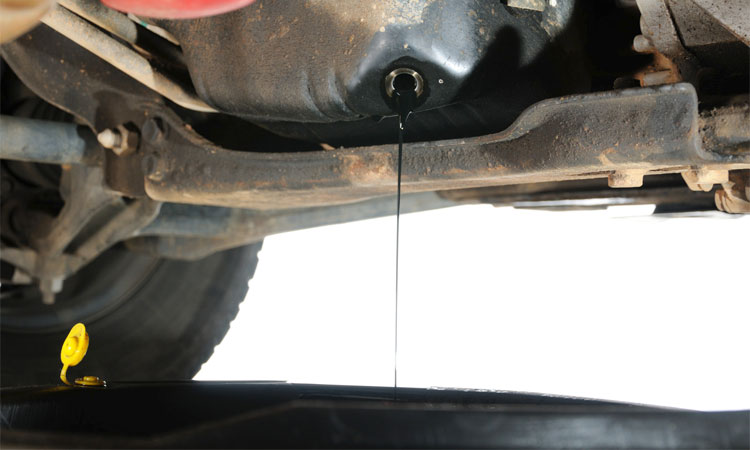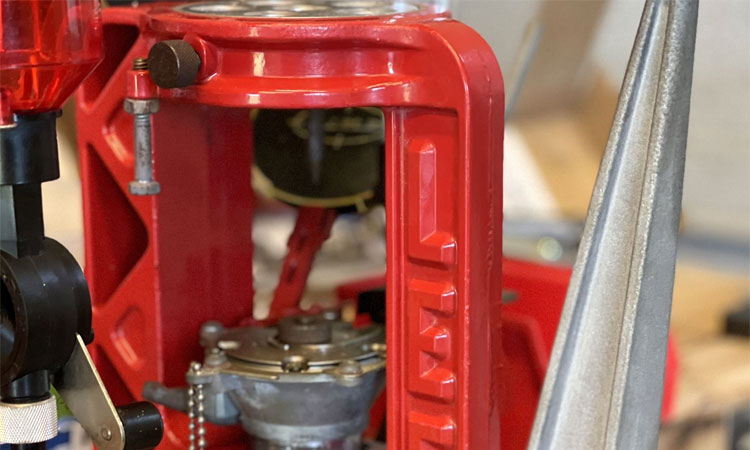9 Best Car Battery Chargers for Fast, Reliable Charging
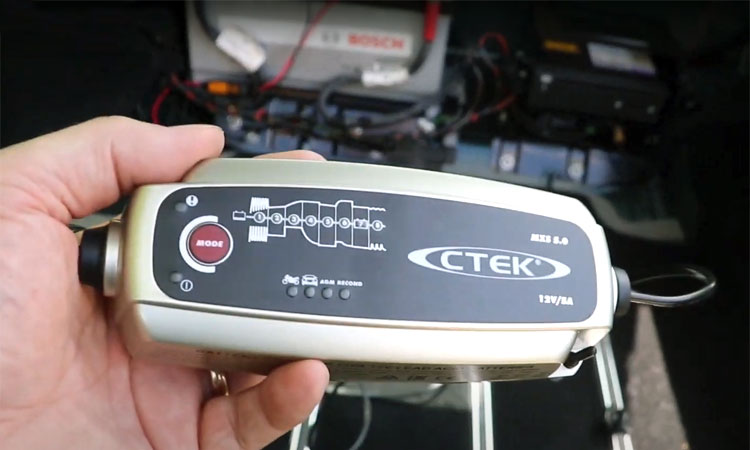
Whether upgrading from an old-style model or buying your first charger, today’s car battery chargers are better than ever. They are safer, easier to use, more efficient, and cause less wear and tear on your car battery.
When shopping for a new battery charger, its ability to charge 12 volt batteries is obviously important since that’s what almost all cars, trucks, motorcycles, and riding lawn mowers use. But also look for compatibility with 6 volt batteries if you have a golf cart, e-bike, scooter, or electric wheelchair that uses this battery voltage.
You also need to make sure your charger will be compatible with your battery type whether that be standard wet cell (flooded), AGM (absorbed glass mat), deep cycle, marine, or others. Some battery chargers even work for lithium-ion batteries.
It’s nice to have a car battery charger that can be set to different current levels which allows you to choose a higher amperage when you need to get going soon or a low amperage for maintaining a battery while in storage. Many of today’s “smart battery chargers” will automatically adjust the charging current for you making them one of the easiest to use.
Here are some of the best car battery chargers currently available.
Our 9 Favorite Automotive Battery Chargers
| Product | Voltage | Battery Type | Charge Current | |
|---|---|---|---|---|
| CTEK MXS 5.0 | 12v | Lead-Acid | 4.3 amp (auto) | |
| Pro-Logix PL2320 | 6v / 12v | Lead-Acid | 2, 10, or 20 amp | |
| NOCO Genius5 | 6v / 12v | Lead-Acid / Lithium-Ion | 5 amp (auto) | |
| OptiMate 6 Ampmatic | 12v | Lead-Acid | 5 amp (auto) | |
| NOCO Genius10 | 6v / 12v | Lead-Acid / Lithium-Ion | 10 amp (auto) | |
| Battery Tender | 12v | Lead-Acid | 2, 8, or 15 amp | |
| Optima Digital 1200 | 12v | Lead-Acid | 12 amp (auto) | |
| Schumacher SC1280 | 6v / 12v | Lead-Acid | 3 or 15 amp | |
| Battery Tender Junior | 12v | Lead-Acid | 0.75 amp |
Car Battery Charger Reviews
#1 – CTEK MXS 5.0 (40-206) Automatic Battery Charger
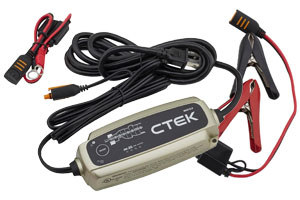
It charges at up to 4.3 amps using an advanced microprocessor for safe, efficient charging, making it the best car battery charger currently out there in our opinion.
This charger works on all 12v lead-acid batteries including AGM (ie: Optima) and features a number of premium features such as automatic temperature sensors and charge sensing, all at an economical price point.
The CTEK MXS 5.0 also includes a battery recondition mode that works on deeply discharged batteries that many cheap battery chargers can’t save. An integrated maintenance charge function is one of the best in the biz.
It is worth noting that the CTEK MXS 5.0 Automatic Battery Charger is not capable of charging batteries with less than 2-volts of charge. While this might be of little issue for anyone simply looking to get back on the road, those hoping to revive a battery from the dead might be best advised to look elsewhere.
>> Check current price <<
#2 – Pro-Logix PL2320 Fully-Automatic Smart Battery Charger
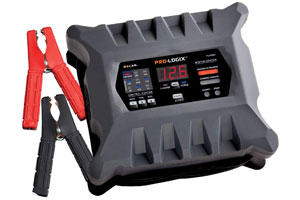
It’s arguable the top car battery charger out there if you need something compatible with both 6-volt and 12-volt batteries. Many automotive enthusiasts will agree it’s their favorite car battery charger.
This charger features the ability to charge and maintain Flooded, AGM, spiral wound, marine deep cycle batteries, and even gel-cell batteries. The PL2320 also utilizes “smart” technology to provide your battery with an optimal charge, every time.
Simply set your battery type, voltage, and charge rate (either 2, 10, or 20 amp) and the Pro-Logix PL2320 will do the rest.
Some consumers have expressed concerns over receiving defective Pro-Logix smart chargers in the past. However, it is also worth mentioning that most of these concerns appear to have been addressed promptly by the company, under full warranty.
>> Check current price <<
#3 – NOCO Genius5 Automatic Smart Car Battery Charger
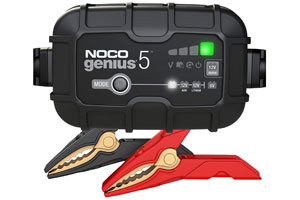
It replaces the discontinued G3500 (which happened to be our top choice when this article originally came out). The Genius5 is 65% more powerful than the outgoing G3500 while shrinking 34% in size. It’s one of the few car chargers that will easily fit in your glove box.
The Genius5 smart charger is fully equipped with a wealth of cutting-edge industry technology, including integral thermal sensors, auto-detection capabilities, and a sulfation elimination mode.
The NOCO is also capable of charging batteries with as low as 1V of charge, which is well below the charge threshold of many similar chargers.
Several consumers have described the NOCO Genius5’s operating manual as “lacking” in many regards. Therefore, it might be necessary to carefully study the information contained within, and provide yourself with plenty of time to familiarize yourself with the unit’s numerous charging and maintenance functions.
>> Check current price <<
#4 – OptiMate 6 Ampmatic TM-181 Smart Car Battery Charger
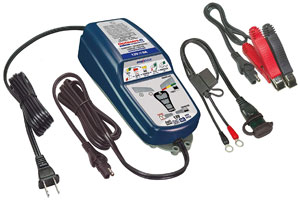
This 5 amp battery charger is capable of desulfation and charging batteries with as low as 0.5-volts of charge. In short, the OptiMate 6 has the ability to restore batteries other chargers wouldn’t be able to save.
Additionally, the Ampmatic includes an automatic adjustment feature, which adapts charging amperage on the fly to accommodate batteries of any size.
It is worth mentioning that the OptiMate 6 battery charger should only be used in dry, indoor settings. Past variants of the OptiMate have been advertised as being completely weather-proof, though this is not entirely true with the TM-181 charger.
>> Check current price <<
#5 – NOCO Genius10 Automatic Smart Car Battery Charger
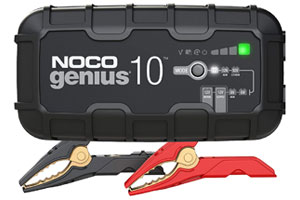
The main benefit of the Genius10 vs Genius5 is that your battery will charge faster. It’s up to you if you actually need that to justify the higher price tag. The Genius10 also features an integrated desulfator, which is intended to rescue previously abandoned or severely discharged batteries from the recycling yard.
As was also stated in regards to the Genius5, the operating manual supplied with the NOCO Genius10 is often regarded as being less than comprehensive in scope.
As a result, consumers should allow themselves enough time to become familiarized with the Genius10 prior to initial use.
>> Check current price <<
#6 – Battery Tender Car Battery Charger/Maintainer
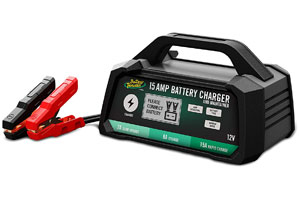
This charger features a simple, easy to use push-button interface, which allows a battery to be hooked up and placed on charge in a matter of seconds. Simply select your battery type and charge rate (2-amp slow charge, 8-amp regular charge, or 15-amp fast charge).
The Battery Tender is compatible with standard, AGM, and gel-cell batteries.
Some consumers have stated their concern over whether or not the Battery Tender 12-Volt Battery Charger is worthy of its current asking price, due to its rather limited capabilities. However, much of this charger’s value comes in the form of simplicity, convenience, user-friendliness, and build quality.
For those who would rather leave complexities in the past, there are likely few greater values on the market than Battery Tender.
>> Check current price <<
#7 – Optima Digital 1200 Car Battery Charger
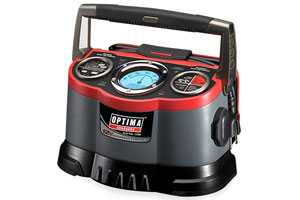
The Optima Digital 1200 12-amp performance battery charger features an LCD interface, simplified setup functions, and a host of “smart” features to enhance charging capabilities. This charger also features an integrated work light.
Early Optima Digital 1200 models were known to be plagued by several display-related electrical issues. However, these issues have now been resolved, with no sign of similar issues reported from newer, redesigned units of the same model and make.
>> Check current price <<
#8 – Schumacher SC1280 Smart Battery Charger
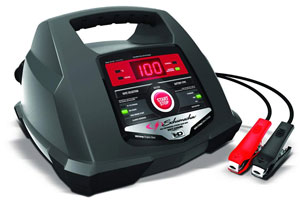
The SC1280 is one of the brand’s most popular products and is compatible with all standard, AGM, marine deep-cycle, and gel-cell batteries, serving as a single source for all of your charging needs.
Auto voltage detection automatically detects either 6v or 12 batteries and you can choose to quickly charge at 15 amps or switch to the 3-amp maintenance mode to automatically maintain the optimal battery charge.
A limited number of consumers have expressed concerns over the durability of the Schumacher SC1280’s clamps. These consumers have stated that these clamps can begin to exhibit play and structural distortion with frequent, heavy use. However, for the general consumer, little issue of this type is anticipated.
>> Check current price <<
#9 – Battery Tender Junior Battery Maintainer
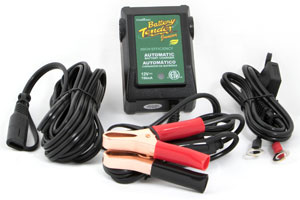
The Battery Tender Junior should be your first choice when storing your classic car, sports car, or other vehicle for the winter (or other long period). There’s good reason why it has been the top selling car battery maintainer for years.
This battery maintainer is essentially a very smart trickle charger that reduces wear and tear on the battery from constant charging. It’s extremely compact and features three modes of operation (initialization, bulk charge, and float mode), which ensures that your vehicle’s battery retains its clean bill of health, even when stored for prolonged periods.
It is worth reiterating that the Battery Tender Junior is intended for use as a maintainer. Those attempting to bring a severely depleted battery back to life with a unit of this type will most likely be sorely disappointed.
However, when used as designed and with its intended purpose in mind, it is hard to imagine that any better option exists when in a market for a unit of this type.
>> Check current price <<
NOCO Genius G3500 (Discontinued)
One of the smallest and most innovative models on the market, the Genius G3500 is the top-ranked pick for both versatility and performance.
It can be used as a battery maintainer for infrequently used batteries, and includes a built-in computer system to give you more reliability and improved safety protection, including spark-proof technology to minimize the potential for electrical arcing.
This may be the most compact battery charger you have ever used, but it is still slip resistant, water and UV resistant, and capable of charging up to twice as fast as conventional battery chargers.
This is a smart charging system, and has all the bells and whistles you would expect from a top of the line model, including a battery repair mode that can potentially bring batteries that have been tested as “bad” back to life. If you have fought with clunky battery chargers in the past, this unit is going to surprise you with its versatility and functionality.
The most common problem reported with the NOCO Genius is that it can be quite sensitive to power fluctuations. The slightest surge or power blink will send the unit into reset mode, preventing it from functioning until it has been disconnected from the power source for a few minutes so the internal systems can reset.
While this can be annoying in rural areas where fluctuations are common, it is not a true flaw as it is designed to prevent damaging the battery it is connected to.
All in all, the Genius line of “smart” chargers from NOCO are fantastic at what they do and once you use the G3500, you’ll wonder how you’ve gone all these years without it.
Schumacher SEM 1562-A-CA (Discontinued)
The Schumacher Charger/Maintainer is more basic than the top rated model, but it carries a lower price tag and features automatic switching from full charge to maintenance modes, which can preserve battery life.
It works on both 6 and 12 volt batteries, includes overcharge protection, and includes clamp and post connectors for easy hook up.
For boats and motor homes, the SEM 1562-A-CA is the perfect battery maintainer so your pleasure craft or work equipment is always ready to go when you need it.
The most notable disadvantage is that the charger only puts out 1.5 amps, so charging a dead battery may take a long time. In charge mode, the unit will shut off after 12 hours, so a completely dead battery may require you to reset the system for a complete charge.
Schumacher SC 1200A-CA SpeedCharge (Discontinued)
The SC 1200A-CA Charging System is the more reminiscent of traditional battery chargers, but it has state of the art technology under the hood. It can be used as a charger, battery maintainer or battery tester, and operates at 3, 6 and 12 amp outputs to give you more control over the charge time.
The built-in microprocessor charges up to 2x faster than traditional chargers, and automatically switches from charger to maintainer and back again as the battery is charged and discharged.
Even better, the amp rate is set internally to provide the fastest, safest charge for the battery it is connected to, so you can hook it up and walk away without worrying about choosing the appropriate amp setting.
On the down side, this charger is not as well suited for charging dead batteries, and may not even recognize that a fully discharged battery is connected.
You can circumvent this by holding down the “display” and “type” buttons after connecting the battery and while plugging the charger into a wall outlet, but be careful not to hold the buttons longer than a couple of minutes or the battery could be permanently damaged.
Tip: Use an OBD2 auto scanner to confirm battery issues are not actually alternator related issues.
Charger Basics
There are multiple forces at play when charging a depleted battery. Battery charges are precision pieces of equipment, which transfer an electrical charge as directed. To use a battery charger properly, it is important to understand the basic principles of its operation.
The following are several key factors relating to battery charger usage.
Voltage
Voltage is the measure of electrical flow that a particular battery is capable of producing. Automotive batteries are of a twelve-volt design, which actually carries a measured voltage of 12.6 volts when fully charged.
Related: 14 Multimeter Symbols and Their Meanings
Amperage
Amperage is the measure of power behind a battery’s flow. In essence, a battery’s rated amperage defines the amount of power that it has at its disposal to be used for in a working capacity.
The higher a battery’s amperage, the better it is able to power various vehicle functions, such as starter operation.
Battery Compatibility
The vast majority of automotive battery chargers will work with any 12-volt battery. The lone exception to this rule is batteries of a gel-cell construction, which require the use of an application-specific charger.
Safety Functions
The majority of modern battery chargers now come equipped with several safety-related features. Perhaps the most vital of which is an auto-detection feature, which cuts all power output upon achieving full charge. This prevents the inadvertent overcharging of any battery to which it is applied.
Another important safety feature utilized by most modern battery chargers is a +/- indicator, which prevents a charger from being hooked up incorrectly.
Charger vs Maintainer
It is quite common for battery chargers and maintainers to be confused with one another, which ultimately leads to misgivings related to the capabilities of each. The following are the most significant differences between battery chargers and maintainers.
Battery Chargers

Many modern battery chargers also incorporate maintainers into their design. This allows motorists to keep their battery at an optimal charge, even during prolonged periods of non-use. Battery chargers of this type are capable of discontinuing output when the adequate charge has been reached.
Battery Maintainer

However, most maintainers do not possess sufficient output to restore a battery to optimal condition, once it has entered a deep state of discharge.
Hooking a battery up to a maintainer can be closely compared to plugging your phone into a charger for brief periods throughout the day. You are not necessarily attempting to charge your phone’s battery to a full charge, but instead are hoping to keep this battery at an optimal charge for later use.
Many battery maintainers also feature an auto-detection feature, which discontinues input when the full charge has been reached.
Some use the word battery maintainer and trickle charger interchangeably but they are not. While both provide a low current to the battery, a maintainer understands when a battery is fully charged and it shuts off charging and simply turns to monitoring until the battery gets slightly discharged where charging begins again.
A trickle charger is not as “smart” and simply provides a constant current all the time. This causes more wear on the battery.
How Long Does it Take to Charge a Dead Battery?
Batteries in a light state of discharge can typically be restored to full capacity in only a few hours, while highly discharged batteries can take as long as 24-hours to fully charge. Charging time is also largely dependent upon the output of a given charger.
For more information regarding the length of time required to charge a vehicle’s battery, check out this link.
Can You Start Your Car With the Charger Attached?
In most cases, it is completely acceptable to start your vehicle with a battery charger attached. In fact, many chargers feature a “boost” mode, which is intended to provide additional amperage for vehicle starting.
However, it is important to never leave a battery charger set to mode selection of this type, for any prolonged period of time. Doing so can quickly cause damage to your vehicle’s battery.
Before attempting to start your vehicle while it is attached to a battery charger, ensure that the battery in question has been given an appropriate amount of time to begin charging. This provides the best possible chance at success.
Can You Leave a Car Battery Charger On Overnight?
With most modern chargers, it is completely fine to leave a battery on charge overnight. Today’s battery chargers possess the capability to automatically cut off the delivery of all power, once an adequate battery charge has been detected. This essentially eliminates any risk of overcharging, during extended periods of use.
On the other hand, not all older battery chargers possess these same auto-detection capabilities. Overnight charging is best avoided with battery chargers of this type. In rare cases, extended periods of charging can produce enough gassing within a sealed battery to cause its case to rupture. In any event, this is a situation best avoided.
It is best to always consult your battery charger’s operating manual, if in question as to whether or not overnight charging is permissible. If any doubts remain, it is always best to remove a battery from charge during the overnight hours, to avoid possible issues or mishaps.

